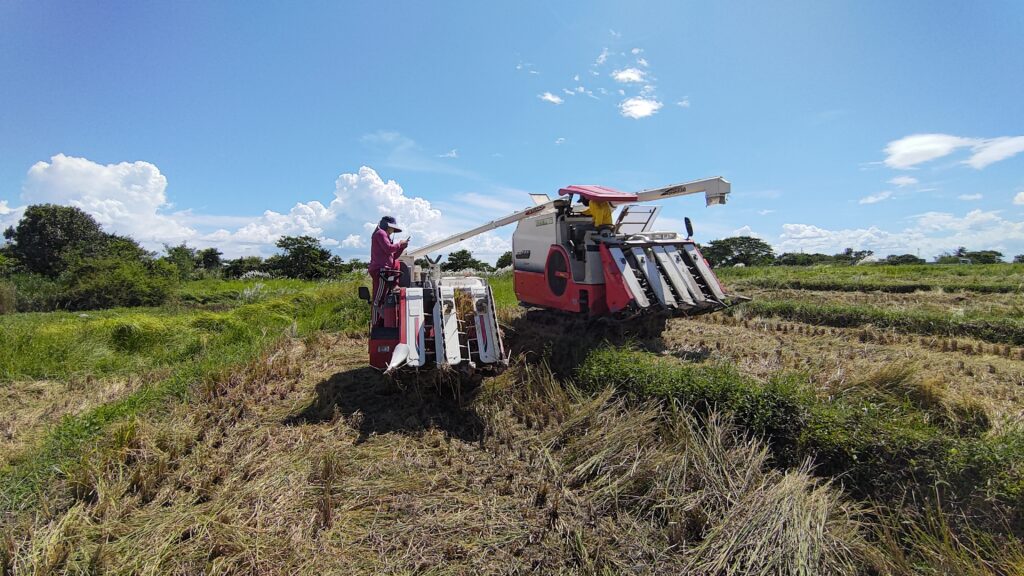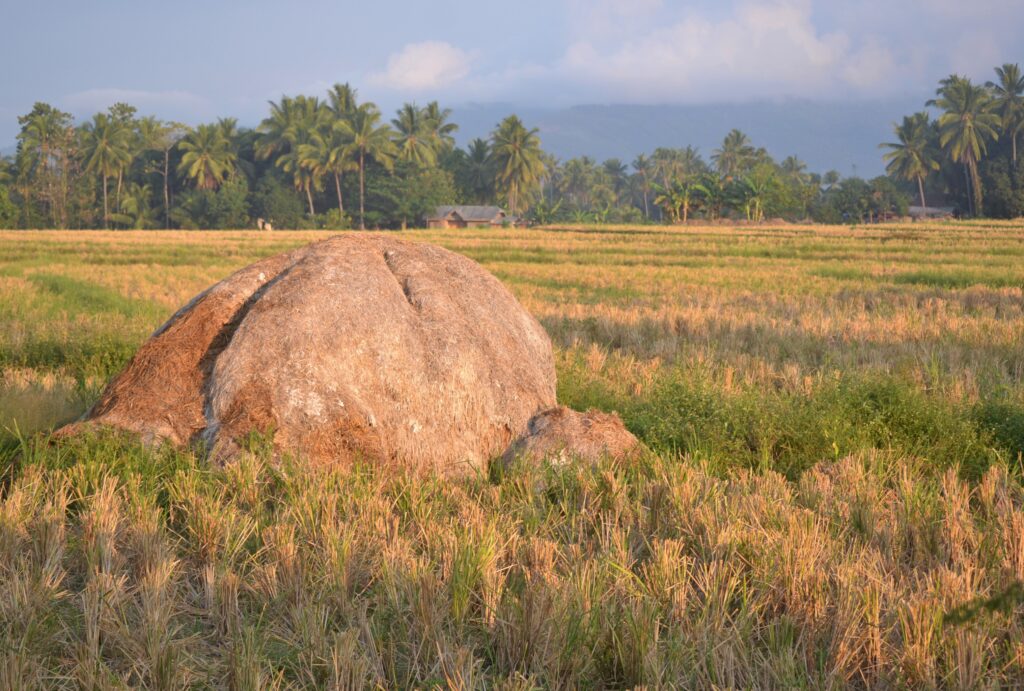by Henrylito D. Tacio
After a period of stagnation in the 2000s, the concentration of methane in the atmosphere has surged. Unless this greenhouse gas is also brought under tighter control, scientists claim, the efforts to tackle climate change will be undermined.
Although methane is a smaller component compared to carbon dioxide, methane drives a more potent “greenhouse effect,” according to Stanford University’s Prof. Robert Jackson, who wrote an editorial in the journal, Environmental Research Letters (ERL).
“Carbon dioxide is still the dominant target for mitigation, for good reason,” journalist Jonathan Amos, BBC Science Correspondent, quoted Prof. Jackson as saying. “But we run the risk that if we lose sight on methane thus offsetting the gains we have.”
In the past, when scientists talked about climate change, they never mentioned methane. It wasn’t until in 2001, when the United Nations-sponsored Intergovernmental Panel on Climate Change (IPCC) that methane was finally given the attention it deserves. “One of the most potent greenhouse gases on Earth,” the report of the Nobel-prize winning group said.
The report created a stir among respected scientists from all over the world. “Methane absorbs heat 21 times more than carbon dioxide and it has 9-15-year life time in the atmosphere over a 100-year period,” said Dr. Constancio Asis, Jr., a recipient of the 2011 Norman E. Borlaug Agricultural Science and Technology Fellowship Award.
Now the bad news. “While carbon dioxide in the atmosphere has increased steadily, methane concentrations grew relatively slowly throughout the 2000s, but have grown ten times faster since 2007,” said a report published in www.theconversation.com.
How the world has gotten into this mess, scientists can only surmise. “Methane has many sources, but the culprit behind the steep rise is probably agriculture,” Prof. Jackson told BBC News. “We do see some increased fossil fuel emissions over the last decade, but we think biological sources, and tropical sources, are the most likely.”
The United Kingdom-based Global Methane Budget calls methane as “the second most important greenhouse gas contributing to human-induced global warming,” it said that that increase “is largely driven by the growth in food production.”
A case in point is rice production. As a matter of fact, the IPCC considers rice cultivation as a major contributor to global warming. “An estimated 19% of the world’s methane production comes from rice paddies,” contend Dr. Alan Teramura, a botany professor at the University of Maryland. “As populations increase in rice-growing areas, more rice – and more methane – are produced.”
Is there a solution in sight? Craig Jamieson, a British national who moved to the Philippines in 2012, has developed a technology that uses the methane from rice straw to harvest palay and mill them into grains.
“(Through this innovation), we can transform rice into a multi-purpose food and fuel crop,” said Jamieson, who is the director of the Straw Innovations (SI), Ltd.
But that’s going ahead of the story. Jamieson, who was a biomass specialist based in London, came to the Philippines to try to set up new “integrated food-energy systems” in agriculture to produce more sustainable food and fuel for rural communities.
He became interested in rice straw once he had moved to Los Baños, Laguna, where the International Rice Research Institute (IRRI) is based. “I was looking for potentially large bioenergy resources that didn’t compete with food production,” he recalled.
“Rice straw is one of the world’s largest bioenergy resources and is currently being underused,” he said.
IRRI studies showed that for every 4 tons of rice grain about 6 tons of straw (called locally as dayami or uhot) are also produced, which are left in the open field. In the Philippines alone, about 11.3 million tons of rice straw are produced after every harvest.
Most Filipino farmers left rice straw in the open field and/or burned later. When left in the flooded fields, decomposed rice straw generates methane-emitting bacteria. Some of the produced methane is released into the atmosphere.
Burning rice straw, however, is not also a good practice. About 60%-80% of rice straw is burned, studies done by the Philippine Rice Research Institute (PhilRice) showed. Burning, they claim, is the most economic and efficient way of clearing the land for the next planting season.
But when done frequently, burning rice straw could reduce the soil’s nitrogen and phosphorus content by 25%, according to Evelyn Javier, supervising science research specialist of PhilRice’s Agronomy, Soil and Physiology division. “(Burning) also cuts potassium content in soil by 20% and sulphur by 5-60%,” she said.
More importantly, burning also causes air pollution as it produces carbon dioxide, carbon monoxide, nitrogen dioxide, and sulphur dioxide. Most of these are also classified as greenhouse gases.
Burning, including rice straw, is outlawed in the country. Several burning alternatives – like incorporating the straw into the paddy field, followed by alternate wetting and drying to reduce methane emissions – are recommended but not always possible. Growing rice on uplands is another option because straw can be incorporated into the soil without high methane emissions of flood rice fields, but it results in reduced yields.
In the past, attempts to profitably collect and use rice straw for clean energy have almost all failed. That’s being turned around by Jamieson.
“I was inspired to develop the rice straw technologies because so much of it was being wasted through burning in the fields or being left to rot and release powerful greenhouse gases,” he said. “If we could just develop the technologies to harvest it, we would instantly transform that waste into a resource for the local communities.”
And that was what Jamieson did. The Rice Straw Biogas Hub is a collaboration between SI and the Laguna-based Southeast Asian Regional Center for Graduate Study and Research in Agriculture (SEARCA).
The project is expected to make clean energy accessible to remote and underserved rural communities. “(It) will generate biogas as clean energy from waste rice straw and provide an innovative package of technology services for rice farmers,” said Dr. Glenn B. Gregorio, SEARCA Director.
The clean fuel is used for drying the grains and milling thereafter. “We asked farmers and their preference was to use the energy for productive purposes rather than domestic use. So, that’s what we are doing,” Jamieson told EDGE Davao.
According to Jamieson, his UK-registered group has established a rice drying service through the combustion of biogas from rice straw.
Drying is the most critical operation after harvesting a rice crop. When rice is harvested, it contains up to 25% moisture. The goal of rice drying is to reduce its moisture content to meet the recommended levels for sale, long-term storage.
But before drying, rice has to be harvested first. Here, the SI introduces a rice harvesting system that it has developed over five years. “The main problems are in getting the rice straw out of the field and to a place where it can be used,” he said.
The solution: the 5-in-1 harvesting technology, referring to a machine, which is said to be the first of its kind in the world. “Our machine performs in one pass of the field and performs the five separate operations in conventional straw collection – harvester, chopper, rake, densifier, and collection. It’s more efficient and, critically, it works even in wet conditions (muddy or flooded fields),” Jamieson pointed out.
The collected palay is then brought to another machine where the grain is separated from the rice straw. “At the biogas hub, a dryer dries the rice grain with energy from the rice wastes, another removes the husk and another mills the grain to remove the brain, thus giving the final product,” Jamieson said.
The dryer takes about 12 hours for the grain to dry, Jamieson said. “The technology innovation is to use rice straw to power the process,” he said. “We give farmers the option to retain ownership of their grains throughout the process.
“In some of today’s cases, farmers only get 4% of the purchase price of rice. In our model, farmers can use our harvesting, drying, and milling services and then sell the finished products to the public. We just take our cut after the sale…”
To produce methane in the hub, water is added with the rice straw. The methane gas is a direct substitute for diesel or kerosene in conventional dryers.
“In the past, the government tried to give out free rice dryers but as soon as something broke, the dryers were no longer used,” Jamieson said. “Our business model is to own and operate our equipment and offer it as a service to farmers. They pay us a service fee but don’t need to buy or operate our equipment.”
During the process, the rice straw gets broken down into fertilizer, which can be used to fertilize the rice. Or, it can be applied as organic fertilizer for crops, vegetables and fruits. “It can be used for anything,” he said.
The clean fuel produced in the biogas is only used for drying rice grains. Because that’s what the farmers in the area need. Jamieson, however, the fuel can also be used for cooking. “If that’s what those concerned farmers and communities want, why not?”
Jamieson believed the biogas hub can prevent the burning of millions of tons of rice straw as waste across the region each year. “The hub has exciting potential to bring clean energy access to the 150 million small-scale rice farmers who need it to process their crops and generate new income opportunities,” he said.
Dr. Gregorio is also very optimistic. “Rice straw biogas is an innovative way to increase our efficiency in producing rice and maximize the utilization of its by-products like straw for energy,” he said in an exclusive interview. “(It’s) a good example for a circular economy – nothing goes to waste. This is carbon-wise rice farming.”
Jamieson is hoping the project will help address energy challenges faced by developing countries like the Philippines. He argued however that what his group is doing is not the only way to use rice straw for energy; it’s just showcasing one route among many. “Once we have harvested and collected the rice straw, the choice of end use will be site specific to some degree,” he pinpointed. – ###
Photo captions:
1) Craig Jamieson, the director of Straw Innovations, Ltd.
2) Rice straw is one of the wastes produced from rice production.
3) The SI technology in action.




